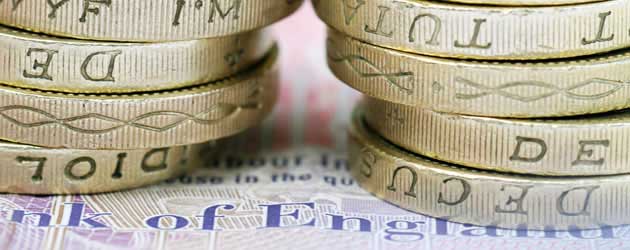
Yesterday was a fairly quiet day for financial markets with very little fresh economic data to contend with. The Pound moved lower against the US Dollar as traders continued to speculate over the possibility of a tapering of asset purchases in December, whilst profit-taking stances took Sterling lower against the Euro.
Further downward movement in Sterling pairs is possible today if the Office for National Statistics’ latest inflation report shows that Consumer Prices fell from 2.7% to 2.5% in October as expected. Falling prices at petrol pumps and high street discounts are predicted to bring UK inflation down to a 6-month low, which could be seen by investors to reduce the possibility of an earlier-than-forecast interest rate cut from the Bank of England.
Under this scenario the Pound would be expected to weaken modestly across the board.
However, Sterling is capable of reclaiming any potential losses if Wednesday’s Quarterly Inflation report from the BoE reflects the optimism in the UK economy that recent indicators have inspired. With UK GDP printing at 0.8% in the third quarter – significantly stronger than the 0.5% that the BoE expected – and Service Sector output coming in sturdier in October than during any other month since May 1996, many economic forecasters now estimate that UK Unemployment will hit the BoE’s 7.0% threshold in 2015.
The UK Central Bank’s forward guidance policy stipulates that interest rates will remain at the current record low, at least, until Unemployment falls to 7.0% – something the BoE currently expects to happen in the third quarter of 2016.
Sentiment towards Sterling is likely to improve drastically if Wednesday’s announcement sees Governor Mark Carney update the UK BoE forecasts to show Unemployment falling to the 7.0% threshold before 2016.
Although Carney may be forced into upgrading UK growth and labour market projections, he may choose to deflect the optimism in order to ensure that Britain maintains its current momentum. The UK economy has improved impressively in the past six months, but the revival could quite easily become unstuck if investors drive UK interest rates higher, which would make lending more expensive to businesses and individuals.
For this reason it is likely that Carney will raise the BoE’s growth projections but temper the optimism with comments on how the 7.0% threshold is a “way station” rather than a trigger for higher rates. In essence he will try to convince firms and individuals that interest rates are still set to remain low for a prolonged period of time, because he knows that Britain needs cheap borrowing costs to fuel the nascent recovery.
It is a tricky task for the Governor; he has to retain the Bank’s authority by sticking to its guidance policy, but at the same time he has to keep rates low to spur UK growth. The bottom line is that investors are unlikely to be deterred by his rhetoric if they perceive the economic projections to mean that interest rates will be raised sooner than Q3 2016.

Comments are closed.